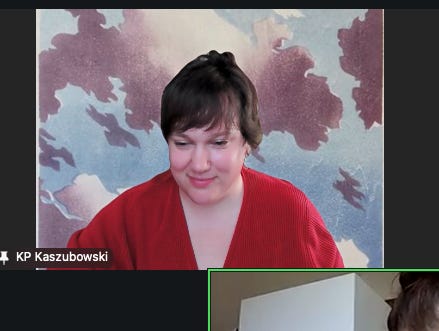Associative leaping and streams of consciousness 🚣♀️🌊🌳 / lyric threads lab: week 3
"Towns are the illusion that things hang together somehow, my pear, your winter." - Anne Carson

We prepare for Week 3’s session by reading three sections of “Plainwater” by Anne Carson: Short Talks, The Life of Towns, and The Anthropology of Water.
But this weekend, in lieu of a discussion about selections from Anne Carson’s “Plainwater,” we will be writing associatively and also in stream of consciousness in a series of prompts inspired by the book.
The structure of this week’s session will feel like a string of pearls.
The desire is to guide you and the cohort members through a series of prompts in order to see how writing associatively and in stream feels.

I want to talk about associative leaping and writing associations as a pathway into writing with energy. Associative leaps bring a wildness to a piece — it’s where we find surprise, pleasure, delight.
When I’m generating writing, it’s rarely in a form that makes sense. Whatever “making sense” means. I think about Hildegard’s visions, how she received messages from God through vibrant images, and later on she explicated them in prose. In writing poetry, collect my images and later on explicate them as I find connections.
Associative leaps are not the norm in lyric poetry (probs?), but they are prevalent, especially since the deep imagism movement. And, personally, associative leaps are what I want most when I’m reading.
From this essay written by Daniel Deardorff, I find this clear as day quote:
“There are three things involved in making a associative leap:
a place to leap from,
a place to leap to,
and most importantly, that space which is in-between.”
We know from the studies done in gestalt psychology that the mind makes order by the objects, ideas, or items before it. Always, an organizing principle is identified even if the objects are all too different from one another.
From this essay by Kari Ann Ebert:
Carl Phillips identifies associative poetry as, “poetry that works almost entirely by means of association— no connecting narrative pieces, often no syntactical connection, poetry that is characterized by leaps not just from stanza to stanza, but from one image to the next in ways that do not immediately make sense…”
and
Robert Frost’s adage, “No surprise in the writer, no surprise in the reader” is so familiar that we often lose its urgency, but without something fresh and new, why even read poetry? If we’re regurgitating the same form, the same imagery, the same metaphors, why even attempt to write a poem? A disruption is needed to engage the reader (and the writer) when we find ourselves falling into a familiar or even formulaic pattern.
And so we begin our session with a series of short prompts.
PROMPT ONE:
To get us warmed up, the first prompt is to respond to the word “missing” with one of these verbs: define, expand, destroy, cure, rhyme, or scene (…not a verb but you know what I mean). In essence, make associations to this word.
Write as many of these verb-ing associations as you can for 2 minutes.
Keep reading with a 7-day free trial
Subscribe to loosely 🧃 gooselike. to keep reading this post and get 7 days of free access to the full post archives.



